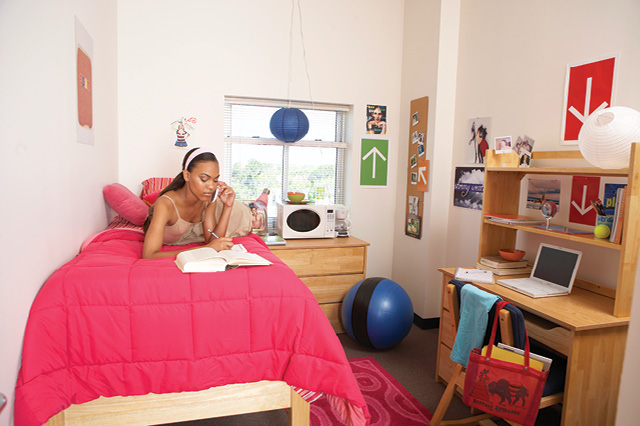Your child’s backpack is a kind of bridge between home and school, a place to carry essential supplies. But carrying around a pack all day can take its toll. The American Occupational Therapy Association reports that overloaded or improperly worn packs can lead to aching backs and shoulders, tingling arms and stooped posture.
Helping your child choose a pack that fits correctly, and then packing it with just the essentials, can make a big difference. Monitor your child’s pack on a regular basis to clean out nonessential items, and make sure your child wears the pack using both straps, rather than just slinging it over one shoulder.
1. The pack itself.
To prevent back pain, the American Chiropractic Association recommends choosing a pack with wide, padded, adjustable straps so that you can position the pack properly. It shouldn’t hang more than 4 inches below your child’s waistline. Packs with many compartments help you distribute the weight of the contents evenly.
2. School supplies.
Stick with the essentials. The pack should weigh no more than 5 to 10 percent of your child’s body weight, according to the ACA. If it weighs more, ask your school about electronic copies of textbooks or to consider photocopying book chapters for children to bring home.
3. Medication.
Know your school’s policy on medication. Children with asthma or food allergies might be allowed to carry an inhaler or an epinephrine auto injector with them. If your child does, make sure school personnel are aware and that the medication is kept where it is readily accessible.
4. Electronics and chargers.
Many schools allow students to bring cellphones, tablets and laptops to class, but these items won’t do any good if they aren’t charged. Make sure your child has power cables, and consider purchasing a portable power bank for charging when electricity isn’t available.
5. Emergency phone list.
Chances are, your child’s important phone numbers are in the contacts list in his or her cellphone. But these won’t be accessible if the phone is lost or damaged. Your child should carry a paper list with your phone number and others she or he might need.
6. Cash.
How much money your child needs to carry depends on a number of factors. Does your child take public transportation to school? Buy a school lunch? Have expenses for extracurricular activities? In many cases, you can avoid having your child carry excess cash by paying for lunch or activities in advance.
7. Weather gear.
During fair weather, pack sunscreen, and a light jacket for cooler mornings. If things are wet and chilly, pack an umbrella, hat, gloves and jackets to keep your child dry and comfortable. Make sure your child has layers for indoor versus outdoor temperatures.
8. Water bottle.
The American Academy of Nutrition and Dietetics says kids should drink an average of 6 to 8 cups of water per day – though age, weight, air temperature and humidity level play a part. Having water on hand at all times can help make sure your child stays hydrated.
9. Personal items.
There are a few little extras that just make things more comfortable and more fun. Hairbrushes, hand lotion, tissues, chewing gum or mints might fall into this category. It’s nice to pack these in their own case so they are easy to grab.
10. Something reflective.
The Centers for Disease Control and Prevention says child pedestrians are at greater risk than adults of being hit by cars because they are smaller and more difficult for drivers to see. Increase your child’s visibility by adding reflectors or reflective material to his or her backpack.
By Christina Elston















